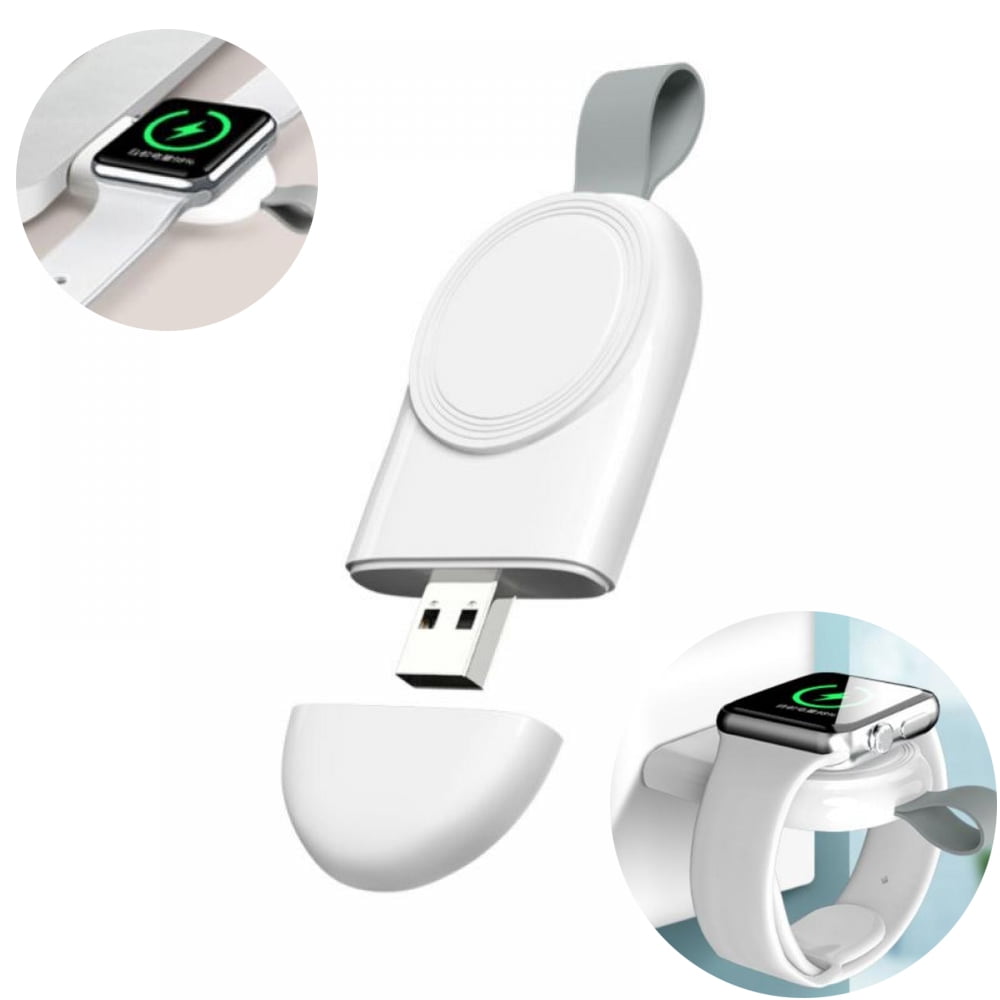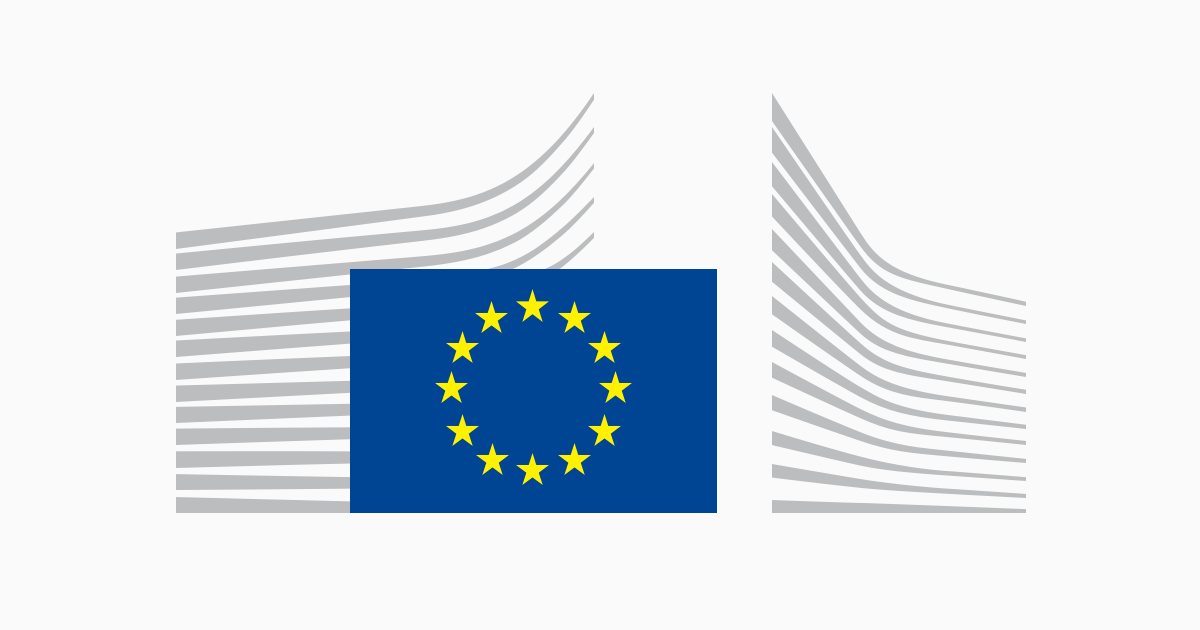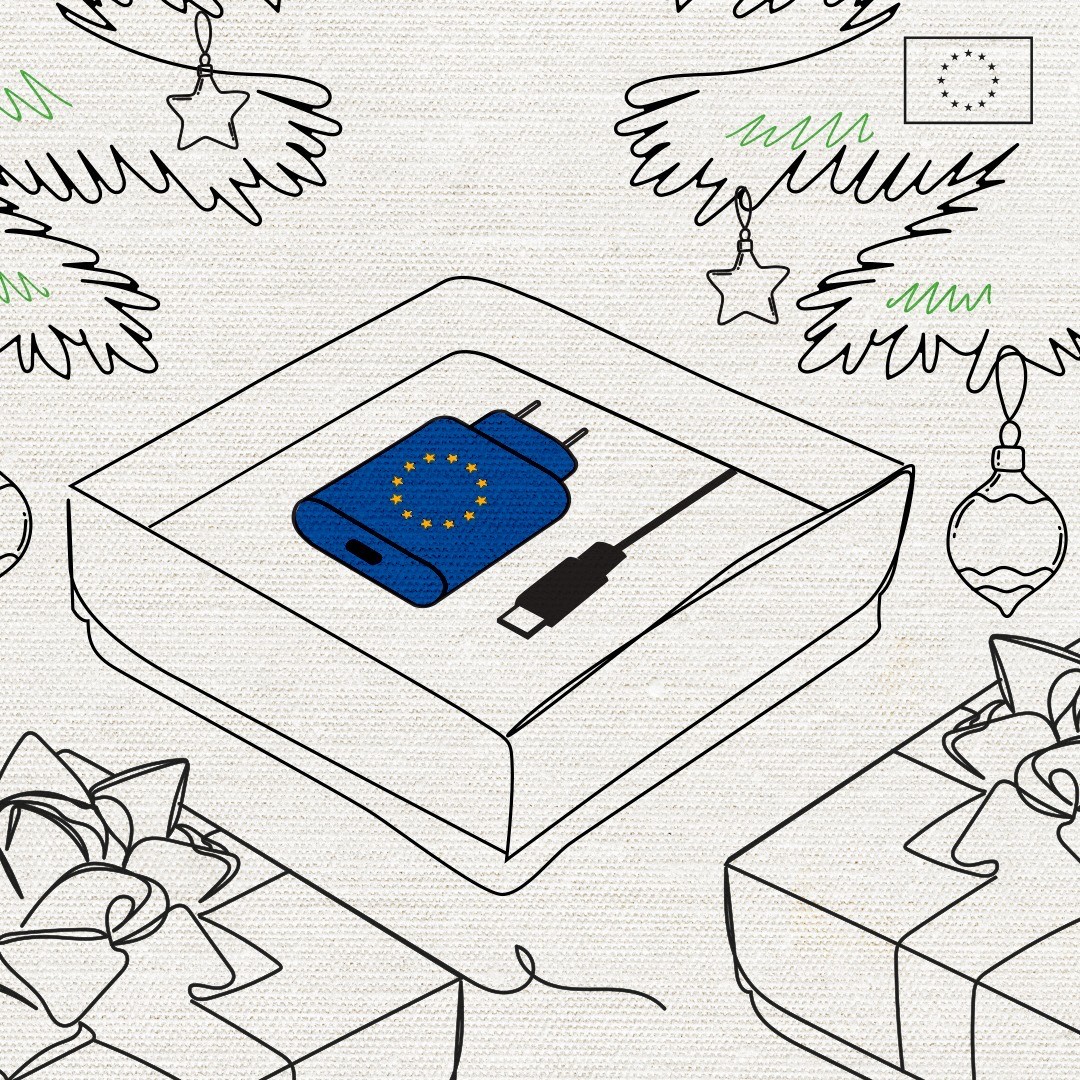cross-posted from: https://jlai.lu/post/3226934
The wait is finally over. From 2024, USB-C will be the common standard for electronic devices in the EU – and we have already seen the impact !
It means
- 🔌The same charger for all phones, tablets and cameras
- ⚡ Harmonised fast-charging technology
- 🔄Reduced e-waste
One charger to rule them all.
Now, a reality.
Learn more about the #EUCommonCharger here: https://europa.eu/!hwjj3G
Unbundling the sale of a charger from the sale of the electronic device .
The ‘common charging’ requirements will apply to all handheld mobile phones, tablets, digital cameras, headphones, headsets, portable speakers, handheld videogame consoles, e-readers, earbuds, keyboards, mice, and portable navigation systems as of 2024. These requirements will also apply to laptops as of 2026. Such transition periods will give industry sufficient time to adapt before the entry into application.
Consumers will be able to purchase a new electronic device without a new charger. This will limit the number of chargers on the market or left unused. Reducing production and disposal of new chargers is estimated to reduce the amount of electronic waste by 980 tonnes yearly
Producers will need to provide relevant visual and written information about charging characteristics, including information on the power the device requires and whether it supports fast charging. This will help consumers understand if their existing chargers meet their new device’s requirements and/or help them select a compatible charger. Combined with the other measures, this will help consumers to limit the number of new chargers purchased and save at least €250 million a year on unnecessary charger purchases.
L’attente est finalement terminée. À partir de 2024, l’USB-C deviendra la norme commune pour les appareils électroniques dans l’UE – et nous avons déjà vu son impact !
Cela signifie
- 🔌Le même chargeur pour tous les téléphones, tablettes et appareils photo
- ⚡ Technologie de charge rapide harmonisée
- 🔄Réduction des déchets électroniques
Un chargeur pour les gouverner tous. Maintenant, une réalité. Pour en savoir plus sur le #EUCommonCharger, cliquez ici : https://europa.eu/!hwjj3G
Les exigences de « charge commune » s’appliqueront à tous les téléphones mobiles portables, tablettes, appareils photo numériques, écouteurs, casques, haut-parleurs portables, consoles de jeux vidéo portables, liseuses électroniques, écouteurs, claviers, souris et systèmes de navigation portables à partir de 2024. Ces exigences s’appliquera également aux ordinateurs portables à partir de 2026. De telles périodes de transition donneront à l’industrie suffisamment de temps pour s’adapter avant l’entrée en application.
Les consommateurs pourront acheter un nouvel appareil électronique sans nouveau chargeur. Cela limitera le nombre de chargeurs sur le marché ou inutilisés. On estime que la réduction de la production et de l’élimination des nouveaux chargeurs permettrait de réduire la quantité de déchets électroniques de 980 tonnes par an.
Les producteurs devront fournir des informations visuelles et écrites pertinentes sur les caractéristiques de charge, y compris des informations sur la puissance requise par l’appareil et s’il prend en charge une charge rapide. Cela aidera les consommateurs à comprendre si leurs chargeurs existants répondent aux exigences de leur nouvel appareil et/ou les aidera à sélectionner un chargeur compatible. Combinée aux autres mesures, cette mesure aidera les consommateurs à limiter le nombre de nouveaux chargeurs achetés et à économiser au moins 250 millions d’euros par an sur les achats inutiles de chargeurs
Let’s get the next debate going and standardise on either a 2 pin euro or 3 pin UK socket now 😂
Why would EU even consider the Brexit standard?
Don’t see what Brexit has to do with this. I’m of the opinion that Brexit was stupid, but it’s getting tiresome that Brexit gets brought up whenever the UK is mentioned, even when completely unrelated.
The Type-G (UK) plug is a genuinely remarkable design. Really, everywhere should have adopted it.
Of course, switching all plugs and sockets is ludicrously tedious and costly, so it’s not happening. Especially since most plugs are “good enough” already.
Realistically they never would, and wouldn’t have even when the UK was in the EU due to the wider prevalence of other socket types.
But if you want an answer as to why they should, it’s because it’s an excellent socket design; just about as safe as it’s possible to make a mains electricity connection, and practically indestructible to boot.
The EU plug is designed so that the pins for power become unreachable before they reach the socket and become powered, and ground wire touches the ground pins before that as well.
I’ll be the contrarian here. I like the US plug - the basic two-prong, non-polarized variant.
It doesn’t have any safety features, but it sure is compact. It’s easy to make it fold flat even in tiny USB cubes.
They make em just as compact with the UK plug too 😀

That is well-done, but it’s quite a bit larger than what I linked.
Yer, that won’t be forever. Brexit hasn’t worked out well.
I’m afraid its worst than you think 😂

And another thing. In fact 3 pins is a security measure. 2 pins is for low powered device. I forgot if it was to prevent power outage or something else.
The first one has two grounds It’s the one in use where I live I find it pretty good
The third pin is for grounding devices. Devices that aren’t guaranteed by design to stop the user accessing live voltage need a ground wire.
In the UK all devices need the ground pin on the plug. Even if a ground isn’t required on the device. Sometimes they are plastic. UK plugs use the longer ground pin as a key that opens the ports to the live and neutral wires. This makes it difficult for children to insert metal things into the live port.
Very cool, thank for the lesson 😁👍
So we should adopt UK plug as long it’s not the driver’s rule.
They are as an inverted pic of french civilisation. For example their food 😋 (i’m joking)
Excellent idea! If only they weren’t so disgustingly bulky 😂
And absolutely hideous to stand on!
The have more features than the average plug.
They were initially designed to be installed by the user (initially devices were sold without plugs). So you could unscrew and rewire them easily.
They also have fuses inside them that are user replaceable. This allowed the UK to use wiring systems in the wall that use less cooper - saving money. It also makes the devices safer. Each device has its own fuse adding redundancy and allowing for smaller fuses for lower powered devices.
The size is the price we pay for safety and repairability.
Very insterresting, thank a lot :)
Obligatory Tom Scott video about UK Plugs
Cool and we see the fuse inside the plug ☺️
I like the brown one. Why aren’t we all switch to that lil smiling face? :)
Green, blue, and brown are already compatible (or at least green and brown are, except ground), though I’m not sure about yellow and red.
The schuko plug is widely adopted over here in Italy too. Usually for computers and appliances with high current requirements (ovens, refrigerators)
Denmark is switching to the EU standard plug too, like Germany and Sweden, I think it’s mandatory in new housing.
Is it only the physical connector or also the Power Delivery protocol? Because if it’s only the connector you might end up plugging 2 things that are not compatible with each other.
Sorry i’m very bad at understanding how power work but maybe the link and the documentation can answer your question ?
I read the website but it doesn’t say. But it does say that the consumer will have to check that the charger is compatible with the device so you might end up frying your device if you connect them to the wrong USB C Charger (things that were prevented because of the different connectors). I don’t say that the directive is wrong but it doesn’t go far enough. It should force all devices manufacturers and chargers manufacturers to use the power delivery protocol so consumers don’t have to worry about power compatibility between chargers and devices.
The power delivery protocol allows for the device and the charger to negotiate a charging power.
Without delivery protocol the charger delivers as much power as it’s can so it might fry the connected device.
No device that is properly following the USB standard will be fried by, or fry, another USB device.
It’s true that a USB-C cable might not work with some PD requirements and will support only a certain USB data version or lower, but all of USB is backwards compatible, you will get slower speeds or less power but not anything dangerous.
Unless the device(s) you use are not properly following the USB standards.
That might be what some document says, but it’s definitely NOT true in the real world. Benson Leung (no longer doing reviews but still active on reddit) proved that by meticulously testing chargers from many manufacturers (some of the popular ones too).
Many chargers even amongst the popular brands could fry your device if the device isn’t being careful. I’m not sure it gotten better in the last 5 years.
That’s why I said “if it’s properly following the standard”
Those devices that Benson tested that failed were not properly following the standard.
As others mentioned in the thread, Nintendo Switches clearly don’t follow the standards. So having this hole patched in the legislation would be nice.
Oh…something it telling me it won’t end well. I was full of hope after all those bad new on politic and climate change. I really hope they anticipated it. 😔
The law requires a the industry agree to a “common” charger. Right now, the industry has picked USB but that might change.
It’s up to the industry to figure out technical details…
But basically it needs to be possible to buy one charger, from any brand, that will “work” to charge any device. That doesn’t necessarily mean it will work well… a 5w charger might take 20 hours to charge a full size laptop battery for example… And that’s if the laptop is off. Some USB chargers provide 240w… you probably don’t want one of those for regular use though - they will be big and heavy and expensive. And a small battery won’t charge that fast anyway.
Since everyone here seems so confused by USB naming schemes, a short primer:
USB 3.0, 3.1, 3.2, and USB4 are the major and minor revision number of the standard. You don’t have to worry about it if you are not implementing it yourself.
The Gen number indicates the supported transfer speed, Gen 1 is 5Gbps, Gen 2 is 10, Gen 3 is 20, regardless of the spec revision.
(USB 2.0 is 480mbps)
Dual lane (Gen ?x2) means you take the speed of the Gen number and multiply it by 2.
The only major difference between USB 3 and 4 is that USB4 uses Type C plug only, whereas USB 3 can use a variety of connectors.
All USB-PD compliant cables support up to 100w of power delivery, only cables labeled as EPR (extended power range) supports up to 240w of power.
Isn’t standard USB C cables only 3A (60W)? And 5A (100W) only if they identify themselves with a built in chip?
Hence, the “USB-PD compliant” portion, which partly is that tiny controller chip.
You can technically have USB-C to C cables that are not PD compliant, but these are not the cables you want to be buying.
Isn’t there a change in how USB is represented now? They should now have the max speed and power on the cable/adapter
What the above user is saying is how it’s listed in specs and technical documents
What you are saying is how the USB IF recommends it be marketed. In theory, yours is the only one the average person should worry about these days
However in the real world it’s an absolute mess of OEMs advertising their ports as being one or the other naming schemes, or neither and just saying “USB”
Also to add to this, the USB-C connector is perfectly compatible with the actual USB data protocol all the way back to the original USB (1.0) in low speed mode (with its mind-dazzling 1.5Mb/s speed) - all the required pins are still there as are the bits of electrical signalling necessary in the original USB protocol.
It’s just that USB-C adds more data lines and other things used in the more modern versions of the USB protocols (including for the newer power protocol - USB-PD, though maintaining backwards compatibility with the old power provision which was controlled via the USB data protocol itself) as well as support for the connector being flippable (works whatever way you plug it in) which is done by basically having the original lines appear twice, one on each side of the connector.
Also, USB4 can optionally support PCIe tunneling, which is a fancy way of saying it supports plugging more advanced types of hardware in (like GPUs, high-speed network cards or NVMe SSDs) at speeds of up to 40Gbps.
And there is USB4 v2 (not kidding, that’s the name) which extends USB4 to up to 80Gbps, but there are no devices that support that yet.
To make it even more confusing, USB 4 and its subsequent versions are basically adapting more and more Thunderbolt features.
Ugh USB is borderline the worst #unreliableseriabus
I’m really curious to see the knock on effects of this legislation down the road. There’s bound to be issues at some point where the USBC law stifles something somewhere, and there’s bound to be someone that finds a way around it somehow.
I like the uniformity to reduce ewaste in particular, but wish rules like this could be more nimble.
Yes. The Commission tried to get manufacturers to adopt this voluntarily for years. They almost all did. Almost. Basically, this needs to be binding legislation just for Apple.
I’m mostly curious about the laptops part because many laptops with discrete GPUs and high power components often come with 125 watt or more charging bricks, which is pushing the limits of USB Power Delivery without more specific cables and chargers. If someone launches a laptop (well more like a portable workstation) that needs 200-300 watts how’re they going to power that over USB C, and what kinds of malicious compliance are we going to see for these edgecases?
I’m hoping the legislation doesn’t forbid dual charging ports, where the device has usb charging which works as well as it can, and then a proper charging port. My current laptop has that configuration.
Because there’s also the issue of durability. A barrel power connector can freely rotate which can absorb a lot of stress when the laptop is moved around. I think a usb-c cable that’s used the same way would fail a lot sooner, especially with all the delicate wiring it has in comparison.
USB PD can currently do up to 240W. From what I understand, there’s still more headroom, so if/when devices need more power they can continue to extend the standard.
My Dell 7560 mobile workstation is powered by USB C when connected to the docking station, which is rated at 230 watt as I recall.
This is my big concern as well. This works because USBC is good, but imagine if they’d done this ten year ago with something like microUSB or FireWire?
The EU law defers to USB IF and allows them to update the standard, so if there’s newer better ports for mobile devices released then it can basically be rubberstamped, plus protocol updates for USB C devices are not impeded at all.
The only plausible near-term issue would be if somebody else created a more compact and robust port with equivalent capabilities (and that will likely take some time) which they want to put as the only port in some devices covered by the regulation.
I don’t think this will impede innovation or getting better speeds. Just as we have done with USB-A, we will just implement new generations with faster speeds in the same form factor and they will have backwards compatibility.
Any news on if they are going after Nintendo for it’s non-standard implementation of usb-c?
Nintendo’s USB-C on the Switch is standard compliant, but modified in a way to allow for smooth plugging into their own docks, which requires a much tighter tolerance.
Cheap third party docks cannot meet the tolerance required for smooth plugging, and the dock that was tested was not even PD compliant but tried to implement the handshake for high power in software instead, which was what caused the bricking of the Switch.
Yeah I think they’ll definitely get in trouble for that. Nintendo’s official statement that “third party chargers will void your warranty” is pretty clearly a breach of the common charger rule.
And it’s not an empty claim either, some standards compliant third party chargers can actually damage a Nintendo Switch. Nintendo will have to fix that, or else their products might be banned across the EU.
I know if I connect my phone to the switch charger it flips out too. So that’s gotta get resolved too
A warranty is supposed to be if it is faulty then they offer to replace it (and depending on the country these stipulation about using 3rd party chargers may not be enforceable, or illegal). Nintendo needs to prove you damaged the hardware under abnormal conditions, not using a spec charger in perfectly working order.
Yes they do, however in the case of the issue with the third-party dock that was not properly made, it’s fairly easy to see that that was what caused the issue which would be allowed to void the warrenty. At least in the US, not sure how the EU would be since they have a stricter consumer rights system
Does it specify C-to-C? Or can cables be A-to-C?
The c port is specifically for mobile devices iirc. You will still see A ports on computers and laptops, but phones, tablets, and probably some wearables will be USB-C port only
Devices (not just laptops) can still have any port - it’s just that at least one of them has to be the “common” charger port (as far as I know, USB-C isn’t part of the legislation. It has provisions for the industry to adopt something different in the future).
Yes, I was glad reading the EU commission proposals seeing it allows for newer emerging standards.
The main talking point of people on Reddit/Lemmy who rallied against this law were people saying it would make us stuck on USB C forever. Clearly that was nonsense.
The way God intended
What happens when usb-c can’t physically supply enough power for future batteries?
Then we change the standard in the future
But this law is going to make changing when a better standard should take over difficult. Imagine if this was passed 5 years ago when the terrible one sided USB was common. The only group that will have the power in the future to update it is the USB group, and that is a group of manufacturers that have a driving goal of absolute cheapness at heart, not innovation. This is a terrible law.
It should be difficult. You need to convince ten billion people to buy new chargers if you’re going to switch to a new charging standard and often several chargers per person (five at home? three at work? two in your car?).
Manufacturing and distributing 50 billion or so chargers only makes sense if your new standard is a lot better than USB-C. And if it is, then it won’t be difficult to convince people to move to it.
That’s why it wasn’t passed “5 years ago”. Because it sucked too much.
USB-C doesn’t, and that’s why you could make the rule. Fuck your potential innovation on the cost of 1.000 tons e-waste a year.
And the downside of too many chargers was very real. They tried to solve it without the costs of a binding law, and Apple refused to join in. So now they’re stuck with a good connector, and the replacement process for it will probably be a bit worse than it otherwise would have been, whenever it happens
The only group that will have the power in the future to update it is the USB group
No, it isn’t. The law includes language that allows the Commission to upgrade the standard that applies, not the USB-IF. If the USB-IF does something stupid the Commission can veto it for the whole EU market, which likely means that the USB-IF won’t be stupid. The standard to be used in the EU will never fall behind the currently adopted one (at least when the Commission is competent and it generally is, in these matters. They’re quite good at technocracy).
Overall EU doesn’t really care what the standard is, only that there is a standard and that it’s sensible, and thus let manufacturers figure out the details on their own, but that doesn’t mean that the EU is handing the USB-IF legislative powers: The commission will only rubber-stamp what comes out of the USB-IF if they indeed have no objections.
We tried your way. It failed. We ended up with no standard and a mess of chargers.
Dunno, probably a new standard. Or a standarised battery ? I’m mot an expert in this area.
I think thats a good opportunity to slow technology and focus on our earth ressource management and waste. We can wait 20 years before buying new machine and set up new standard ? Then every producers test and create new prototype in their lab along technological foundation to help with their research ?
It can already do 240 watts which is really excessive for a mobile computer. Technology trends toward lower power requirements, not higher.
I don’t think there are any 240 watt chargers on the market though despite it theoretically being supported. Last I read, there were some doubts around if it was truly feasible. Laptops that require more than 90 or so watts still come with proprietary chargers because they can’t charge at full rate over USB-C.
My Dell laptop is 240 watts and the only way to charge it at full rate over USB is to buy a proprietary $250 charger from Dell that provides two USB cords that must be plugged in together to achieve a combined 240 watts. The 90 watt charger from my old laptop won’t keep it running for more than an hour.
Anyway, hopefully we see 240 watt USB-C in the future but at the moment it seems to be vaporware. Maybe this ruling will push it forward.
There’s 240w usb-c on every common marketplace for US market, is that not the case for eu?
I’m speaking from a US point of view. To my knowledge there are no 240 watt USB-C chargers in existence.
There are a handful that claim 240 watts but upon closer inspection only provide a max of ~100 watts per port.
There are cables sold with a 240 watt rating but no actual chargers.
They definitely exist. But there aren’t many devices that are compatible with them - the 240W chargers run at much higher voltage than regular USB.
Also - only really large batteries (ones that you can’t take with you on an airplane for example) are able to charge at 240W without overheating. So there’s just not much demand for a charger that powerful. Lower watt chargers are cheaper and smaller and lighter.
The Framework Laptop 16 has a 180W PD charger. It’s not the full 240W but it’s using that new standard and the laptop will work with full 240W chargers when they hit the market.
So there’s not a 240w charger on the market.
This is disingenuous. There are 240W chargers, just not “on the market”. If you really want one you can contact the manufacturers for an engineer sample. But since you’re likely not a device manufacturer, you won’t have any use of it since there’s no 240W sink available “on the market”.
I have no idea
Not excessive at all for a laptop, a gaming laptop may burn 400W at full tilt. Max power consumption really is more of a matter of how much heat dissipation the form factor allows in those instances: Just because you find a way to do more computation with less watts doesn’t mean that people won’t use it to do more computation at the same watts.
Say that to the graphics devision of computing please.
Year after year it takes less power for the equivalent amount of processing capability. These devices only require so much now because people demanded they get exponentially stronger
Now it’s time to make batteries user replaceable ;)
In the US we are seeing a lot of cheap products that are supposedly USB-C. Like the flashlight I got for Christmas. But they will only charge with a USB-A to USB-C cable. They are basically USB-A chargers with a different shaped plug. They will not charge with a real USB-C cable. Is this also true in the EU?
They’re probably using one of the non-standard quick-charge modes and can’t fall back to slow charging. Likely won’t work at just every USB-A port then either as there’s a couple of those standards around and computers don’t tend to support them (not just their USB-C ports, but all).
USB-C has its own quickcharge standard, USB-PD, and that’s also what’s required by EU rules.
Yeah that’s when they cheap out on a resistor to make it USB/USB-C compliant (since without that they simply don’t request any power. There isn’t any power provided if nothing is requested).
Idk if the rule applies to that.
I’m do not understand why it would not be able to charge with a X to USB-C.
As far as I’m aware, even if one of the two connected devices (such as charger and flashlight) doesn’t have a proper chip for agreeing on voltage, it will just default to 5v. The only thing that should prevent that is a damaged (as in no + or - connection) cable. Even if the data connections are damaged, it should still charge in slow-mode.
Needless to say, I have never experienced that problem even with cheap china cables/chargers, except, of course, for damaged cables.
Edit: There would be one other scenario, being that one cannot charge a device by connecting it to another device which is not capable of charging, such as connecting the flashlight to your computers’ charge-only port.
And yes, I’m from the EU. :)
Edit2: from reading the other comments, I have come to understand that there indeed exist cables which are not capable of properly transferring power, though it boggles my mind as to why.
For c to c cables, the devices need to be able to communicate with each other to establish which one is the host (the charger in this case). With a to c cables, the type a side is assumed to be the host by default. You’ll often find that manufacturers of cheaper devices prefer not to spend the extra money to implement this technology, though some will, and in fact allow for even more functionality. For example, one of my flashlights does have that chip, so it can both charge from a c to c cable if a charger is detected, and also automatically act as a power bank if I connect a device to it such as a mobile phone.
The technology you’re talking about is literally two resistors - parts that cost less than a cent a piece when you get a few hundred.
All I’m hearing is potential savings $$$
Currently this also seems true in the UK. The cheap USB-C devices I have refuse to charge using a real USB cable. And instead need a USB-A to USB-C cable.
Brussels effect at work!
Let’s hope they do this with the 3,5mm jack too
I am a huge fan of USB-C and have been waiting for it to come to the US for years. I hope that it will be here soon and that more companies will adopt it.
What are you using that doesn’t have it? Samsung, Apple, Dell, HP now use it on all phones, Tablets, Laptops. Playstation uses them, Vapes as well. I am unsure what XBOX uses, but usually people use a dock so I haven’t looked at the plug.
Not asking as if there isn’t a device out there that doesn’t use it, but I don’t know of any devices I can think ofSmall appliance. For example, 6 months ago, I was looking for a new bike front light and finding one that charged by USB type C was difficult. I thought I might replace my rear light too, but all the simple, reasonably priced ones were micro USB, so I gave up.
Honestly I would hold off on purchases for USB-C models of devices that used to sell with micro USB now after getting various things which only work with the USB-A -> USB-C adapters. Seems like manufacturers did the bare minimum and just replaced the socket and plastic hole, without any other changes, so while yes it can charge via a USB-C port, it still requires the USB-A cable because it can’t do any negotiation on charging specs and was designed with the 5V assumption of USB-A power.
For myself, I’m always carrying around a Type A block, so it’s not an issue right now and probably won’t be an issue until the batteries die. I just want to carry around 1 less cable.
I bought a Logitech wireless mouse last year (and a high end, well-reviewed model, to be clear) and was absolutely astounded to see that it charges by microUSB.
My beard trimmer also wasn’t USB C but in fairness maybe that’s a “we designed this so you can charge it in a wet, steamy bathroom” kinda thing.
eBook readers took ages to finally transition for some reason (faaaaaaar after phones/tablets), but we’re now finally there.
Plenty of laptops still use their crappy barrel plugs
My head torch I bought a few weeks ago was microUSB
I went into Lidl and bought a AA/AAA battery recharger, that was microUSB too
Don’t get me wrong, most stuff is Type-C now, but microUSB and others still rear their ugly heads a fair bit, and it needs to stop.
I don’t understand what is wrong with microUSB in applications like charging a mouse? I don’t know what the effective difference really is in such cases. It’s not like USB-C means you can do everything with the same cable. That’s not how USB-C works. So either way, you’ll probably need multiple cables depending on the devices you’re using.
But in your example, they are equivalent. USB-c can do everything micro-usb can, so moving the mouse to usb-c is beneficial to the customer by reducing the number of different cables and connectors to deal with. I suppose usb-c is a little bigger but not enough to make a difference on a mouse
But it also requires redesigning everything and recalling all the stock that is already out there if you want everything to be USB-C, which I think is a little silly when talking about a mouse.
So yes, USB-C can do all of those things, but to move to it also requires redesigning the product, recalling or selling out of the old product, and possibly raising the price to cover it.
USB-C makes sense to me in a lot of applications, but I just don’t think it matters much when it comes to something like a mouse at this point. Five years from now if there’s a rechargeable mouse that isn’t USB-C? Fine. I agree with you. It should be. In 2023/2024? I think it’s acceptable.
Nobody is talking about recalling old products to swap out USB ports and redesigning for USB-C is trivial. They mean for future purchases, it’s nice to use a single standard.
I understand that, but until the old stocks run out, the future options with USB-C ports aren’t going to show up for purchase. Logitech isn’t going to make and sell mouse model X with a USB-C port until they run out of all of what they already have. And that goes right the way both up and down the supply chain.
I guess I kind of assumed we already are five years from now. Everything I see online has been complaining about iPhone being the last device to move to usb-c and it has been going on for years. I expected everything else to be already there or well on its way. If you redesign a mouse about every five years, there ought to have been enough time already.
Is a mouse really redesigned every five years? I’ve used the same make of Logitech wireless trackball for I don’t know how long now.
You can get USB micro to USB-C adaptors for about 1 to $2 each. That lets you use a single cable to charge both types of devices, which is the best of both worlds.
Huh? It’s been here for years. It’s great
I wish smartwatches were included too so that I could travel with just one charger and one cable. I guess waterproofing a USB-C port is not that easy though (for the ratings those watches usually have).
What about little pucks as a compromise?
Or ideally, a single standsrdised one
Your smart watch has a charging port? All mine (going back to the Moto 360) have always been charged wirelessly.
Actually I wrote smartwatch but I meant GPS watch. I recently bought a Garmin and there’s no wireless charging for it.
Yeah. Wireless charging helps some of that, especially if the pad is itself connected through a USB-C cable.
Ideally, in my mind, someday phones themselves will be able to charge wireless devices, so we’ll connect the phone through the USB-C cable and place the watch on top and they’ll both be ready to go in the morning.
Some phones can already do that, like wireless powershare (Samsung)
Yeah mine does, I love it. I just want it to be standard.
it’s definitely looking like it will be standard. the new iPhones do it too.
Google phones had and maybe still have it. There was an ad about it of one of their phones charging an iPhone.
My phone has reverse wireless charging.
It’s slow and terrible, but does work
What about wireless charging with a USB C wireless charging pad?
Agreed.
Until then:

I can relate to this. I’ve got a Garmin and I’m traveling currently. The best solution I could find was to get a Garmin - USB-C adapter with a little loop at the end, so I tied it to my existing USB-C cable and can plug in the adapter whenever I need to charge my watch.
It sure seems like the EU has their shit together on more stuff than we do. We can only break shit that was already fixed because reasons. I know the EU is not perfect but they sure seem to get stuff right more often than not. At least Apple won’t go through the trouble of making two iPhones for no reason other than to just be an asshole.
The EU cares about consumer protection because most of the big companies in a position to fuck over customers are based in the US.
It’s why Americans don’t care about consumer protection. They believe exploitation is okay as long as it’s by another American.
I think Americans have bigger issues to deal with than chargers or net neutrality (e.g. playing world police, or starving children, abortion laws). Thankfully the EU can step up.
Who’s “we”?
America, I’m assuming
Yes I’m a yank.





















